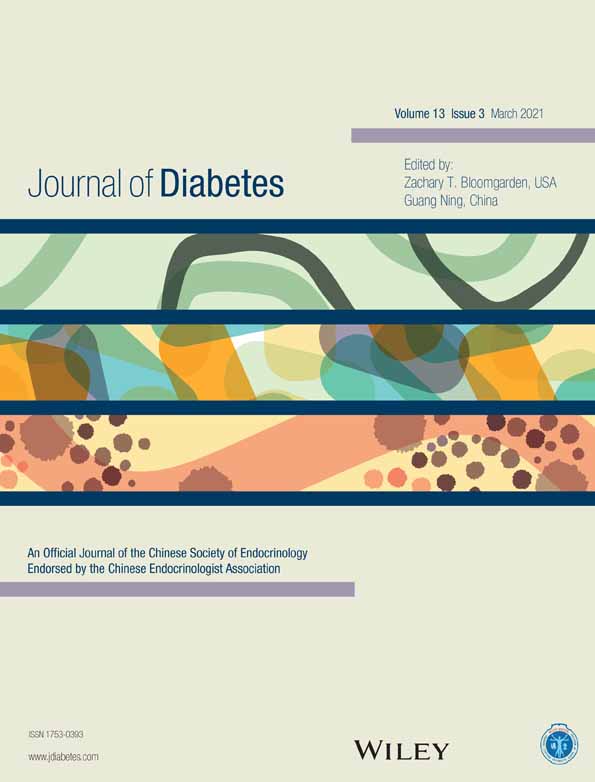Hemoglobin concentration and iron supplement during pregnancy were associated with an increased risk of gestational diabetes mellitus
妊娠期血红蛋白水平和补铁与妊娠期糖尿病风险增加有关
Shuting Si and Yu Shen have equally contributed to the manuscript.
Funding information: National Natural Science Foundation of China, Grant/Award Number: 81973055; The national key research and development program of China, Grant/Award Number: 2016YFC1305301; Key research and development projects of Zhejiang science and Technology Department, Grant/Award Number: 2018C03010; The Fundamental Research Funds for the Central Universities
Abstract
enBackground
Hemoglobin (Hb) measurement is a conventional test during perinatal visits. Hb concentration is related to iron supplement. However, studies focusing on Hb levels, iron supplement, and pregnancy outcomes are scarce. This study aimed to determine whether Hb levels and iron supplement were associated with the risk of gestational diabetes mellitus (GDM).
Methods
A running hospital-based cohort was conducted from August, 2011. The demographic data and medical information were collected individually through questionnaires and patient medical records. Multiple linear regression was applied for the association between Hb levels, iron supplement, and blood glucose. Multiple logistic regression was used for evaluating odds ratios between Hb levels, iron supplement, and GDM.
Results
Hb levels during first (T1) and second trimester (T2) of pregnancy were significantly and positively associated with blood glucose and GDM risk. After adjusting for age, prepregnancy body mass index, and other risk factors, pregnant women with Hb ≥ 11 g/dL and iron supplement had higher postprandial blood glucose at 1 hour (Hb ≥ 11 g/dL in T2 and iron supplement in T1: β = 0.860,P = <0.001; Hb ≥ 11 g/dL in T2 and iron supplement in T2: β = 0.960,P < 0.001; Hb ≥ 11 g/dL in T1 and iron supplement in T2: β = 1.133, P = 0.033) and GDM risks (odds ratio [OR] = 1.53, 95% confidence interval [CI]: 1.05-2.24; OR = 1.92, 95% CI: 1.13-3.35; OR = 2.15, 95% CI: 1.07-4.34, respectively), compared with those with Hb < 11 g/dL and without iron supplement.
Conclusion
High Hb concentration and iron supplements without anemia increased postprandial blood glucose and risks for GDM. It indicates that pregnant women with good Hb levels should not be advised to take iron supplements during pregnancy.
摘要
zh背景
血红蛋白(Hemoglobin, Hb)测定是孕期的常规检查, Hb浓度与铁的补充有关。然而, 有关Hb水平、铁补充和妊娠结局的研究很少。本研究旨在探索Hb水平和铁补充剂是否与妊娠糖尿病(Gestational diabetes, GDM)的发生风险有关。
方法
2011年8月开始以医院为基础建立动态队列研究。通过问卷调查和电子医疗系统收集社会人口学特征和医疗信息等。采用多元线性回归分析Hb、补铁和血糖的关系;采用多元logistic回归估计Hb、补铁对GDM的比值比。
结果
孕早期和孕中期的Hb水平均与血糖值以及GDM发生风险呈正相关。调整年龄、孕前BMI等因素后, 与Hb<11g/dL并且不补铁相比, Hb≥11g/dL且补铁的孕妇餐后1小时血糖较高(孕中期Hb≥11g/dL且孕早期补铁: β=0.860, P<0.001;孕中期Hb≥11g/dL且孕中期补铁:β= 0.960, P <0.001;孕早期Hb≥11g/dL且孕中期补铁:: β=1.133, P= 0.033), GDM的患病风险也更高(OR=1.53, 95%CI: 1.05-2.24; OR= 1.92,95% CI: 1.13-3.3; OR=2.15, 95%CI: 1.07-4.34)。
结论
血红蛋白较高的非贫血孕妇补铁会增加餐后血糖水平且增加GDM的患病风险。提示在血红蛋白水平较高的孕妇中不建议进行孕期补铁。




